
If you have kept pace with former Olympic swimmer Nisha Millet’s Couch to 1k swimming plan till now, you are entering the last leg of your plan and will soon be swimming a whole kilometre without having to take a break.
However, if you think you need some more training, repeat the routine for Weeks 7 and 8 before starting out on this week’s training plan. This would help you gain more strength and confidence in yourself, which is important because from here on, we start the final and hard push towards swimming 1km nonstop with good form and efficient stroke.
Also read: Fitness Planner | Swimming: How to go from zero to 1km: Part 1, Part 2, Part 3
If you have stuck with the plan till now, you now know that you can swim 400m, 500m and 600m nonstop. Over the next four weeks, we shall start with a 700m continuous swim and then over the next three weeks, build it up and swim a full kilometre by the end of Week 12 of training.
However, distance is not the only thing you will be focusing on this month, as without technique and endurance, you will struggle to complete your goal. “We shall continue with drills such as kicks, pulls, bilateral breathing and accessory work with flippers, kick board, paddles and pull buoys to build endurance and improve your technique even as we focus on increasing the distance throughout the month culminating in your first kilometre of non-stop swim,” says Nisha Millet, founder of the Nisha Millet Swimming Academy.
Millet also includes some strength training, yoga, stretching and mobility and cross-training like jogging and walking as all of them play an important role in making you strong and keeping you injury free.
Some of the new drills included in the training plan for this month are speed drills, gliding, counting your strokes to check if you are improving your swimming economy, pyramid sets and advanced breathing drills such as 3, 5, 7, 9 (in which you breathe after 3 strokes on one lap, followed by breathing after 5 strokes in the subsequent lap and so on).
“The 3, 5, 7, 9 drill helps you become faster and more efficient because it trains you to control your breathing better while swimming,” says Chirag Somani, a customer success manager in Bengaluru. Even Somani, who has been swimming since he was a toddler, needed to perform all kinds of drills to be able to swim better and improve his technique, especially breathing. “I was used to breathing on just one side, so doing the bilateral breathing drills helped and that meant I was not putting all the pressure on just one shoulder,” added the 31-year-old who took two months of regular training to complete his first 1km swim.
In the penultimate week before the big day, our focus will turn to improving our breathing in the water and fine-tuning the technique. This is also the week when your swim volume increases and you cover a total distance of 2km for the first time in a day as well as work on improving your swim speed and stamina. Interval training in which you swim a slow 100m and a fast 100 alternatingly improves your stamina and speed.
If you have done your drills and completed all workouts as per this training, you would be ready when the day comes to swim your maiden 1km. However, it is natural to be slightly nervous. Anusha Ganesas, a 29-year-old consultant from Bengaluru, says: “The breathing workouts, kick drills, pull with paddles and dog paddling and treading helped me build up my strength and core, which played a big role in ensuring I was able to complete my first 1km without any hiccups. You still have some fear when you start because the distance seems daunting but that’s just 1 per cent. Once I started the swim, I started enjoying myself and gave myself targets to go for.” Ganesan took a little over two months to swim her maiden 1km freestyle.
And to calm your nerves, Millet has some advice: “Keep your arm strokes nice and slow with relaxed slow kicks so that you don’t tire yourself out. If you think you have a tendency to rush in the water, then make sure you touch the top of your quadriceps (thigh) with your thumb when the arm is on its way out of the water. That will automatically slow you down. Keep your wrist and ankles relaxed. As far as breathing goes, make sure you turn your head to breathe after every two or three strokes. If needed, hydrate midway through your swim by treading the water. Don’t forget to glide, find a rhythm and keep it slow and steady, and you should be fine. And if you still think you are going to have to stop due to tired legs, just grab a pull buoy and use it to finish your maiden 1km swim,” says Millet.
Finally, don’t forget to treat yourself a good massage and a feast. It’s all for recovery, she adds.
Good luck.
Fitness planner | Swimming: Weeks 19-12
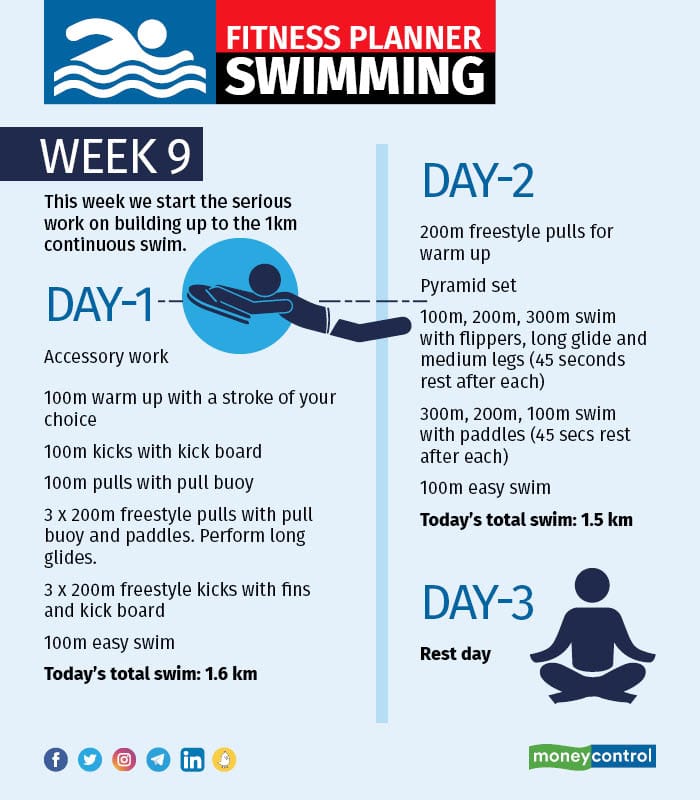
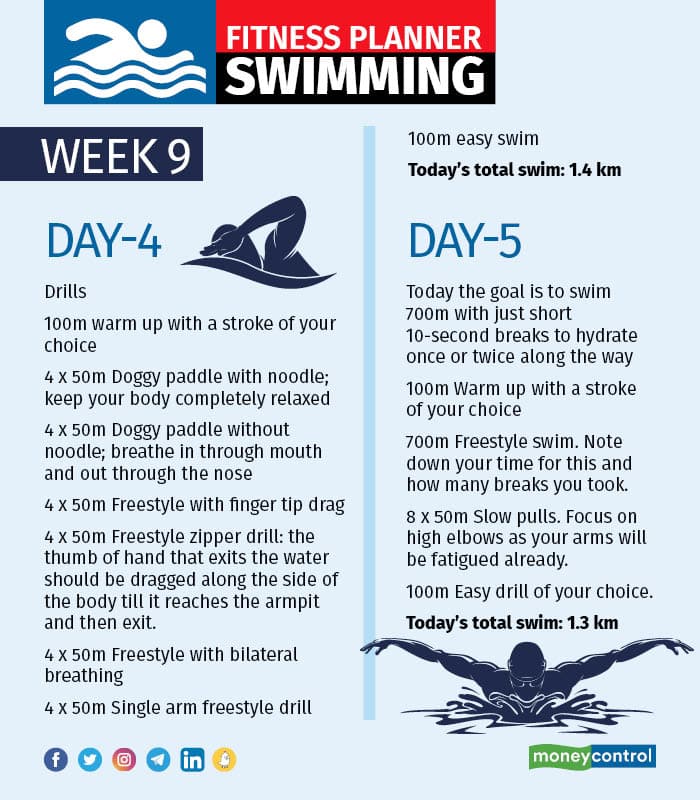
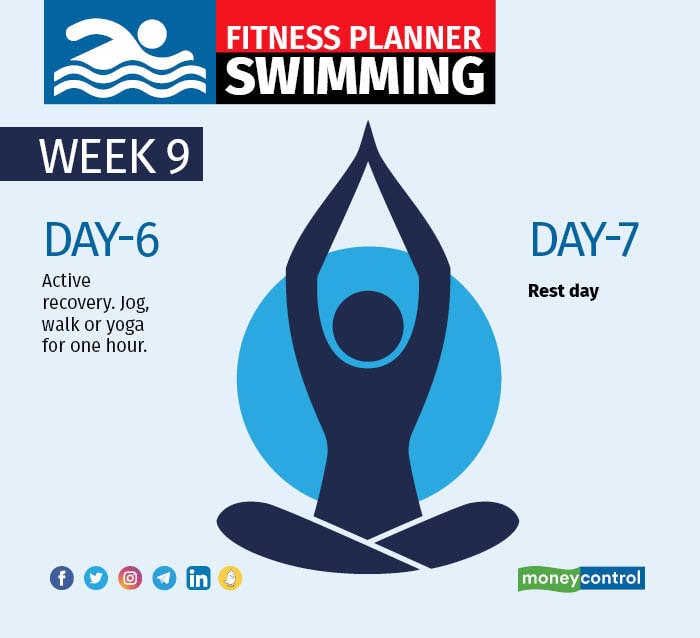
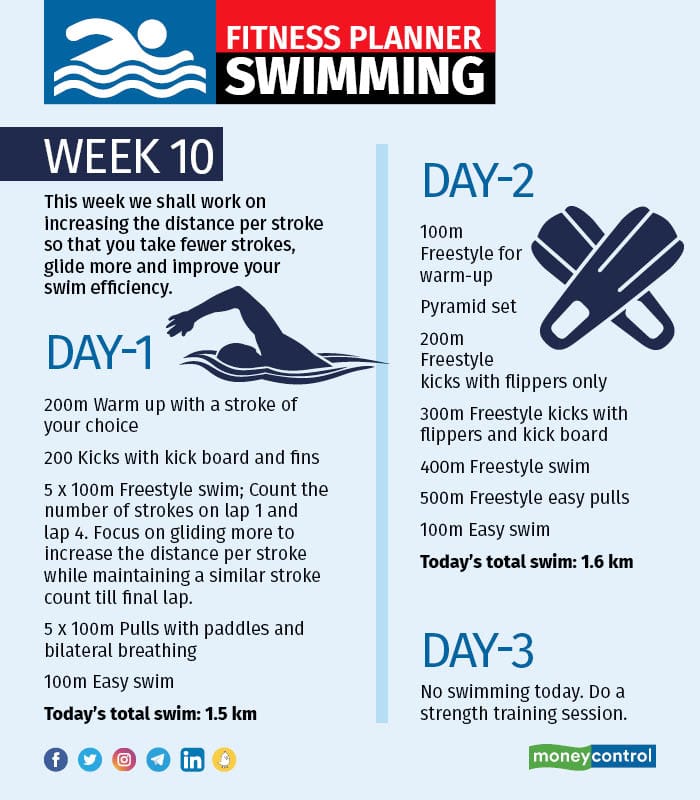
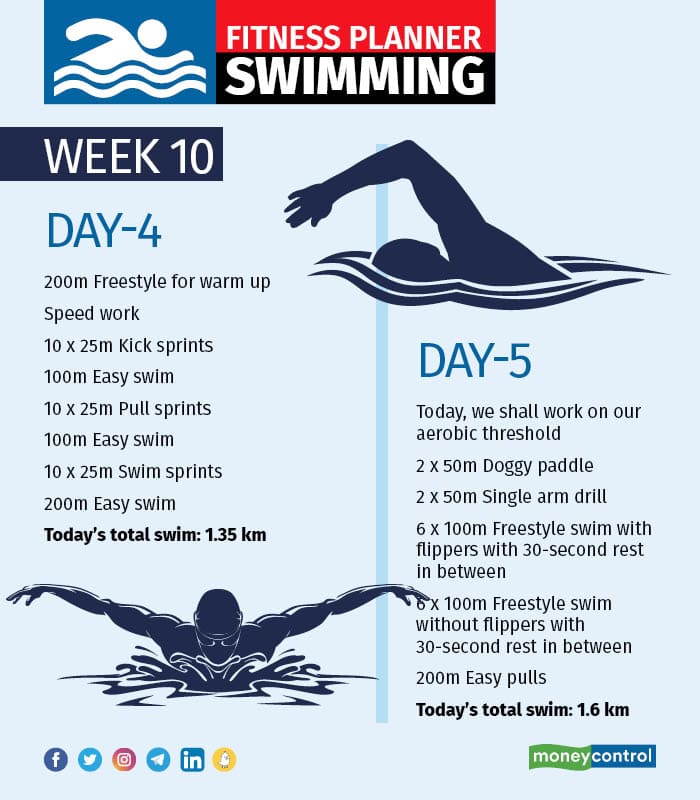
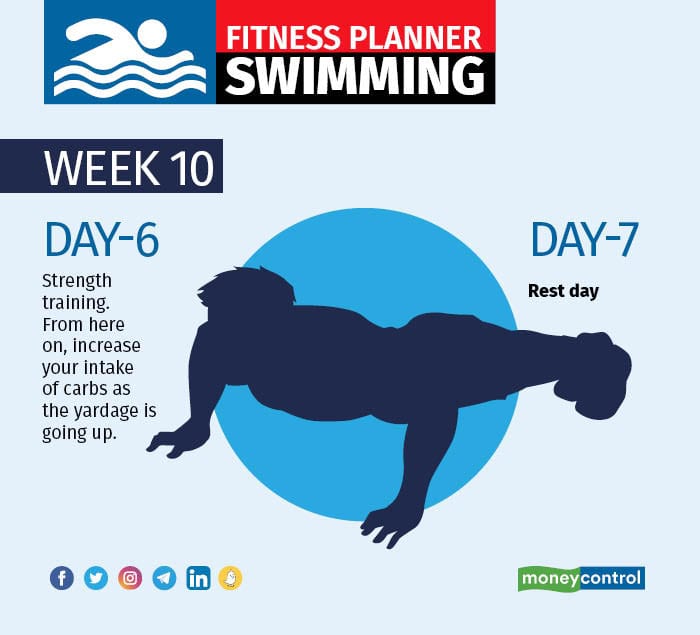
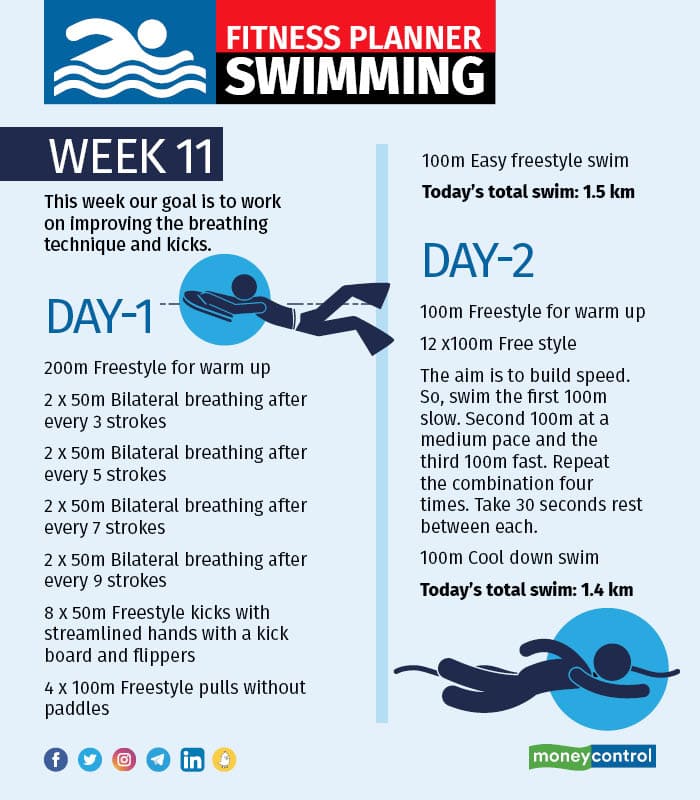
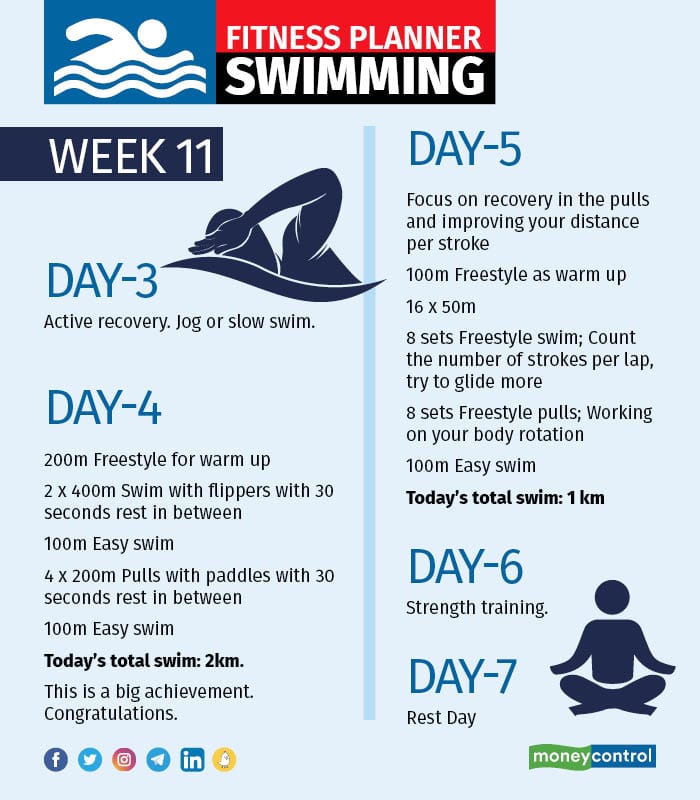
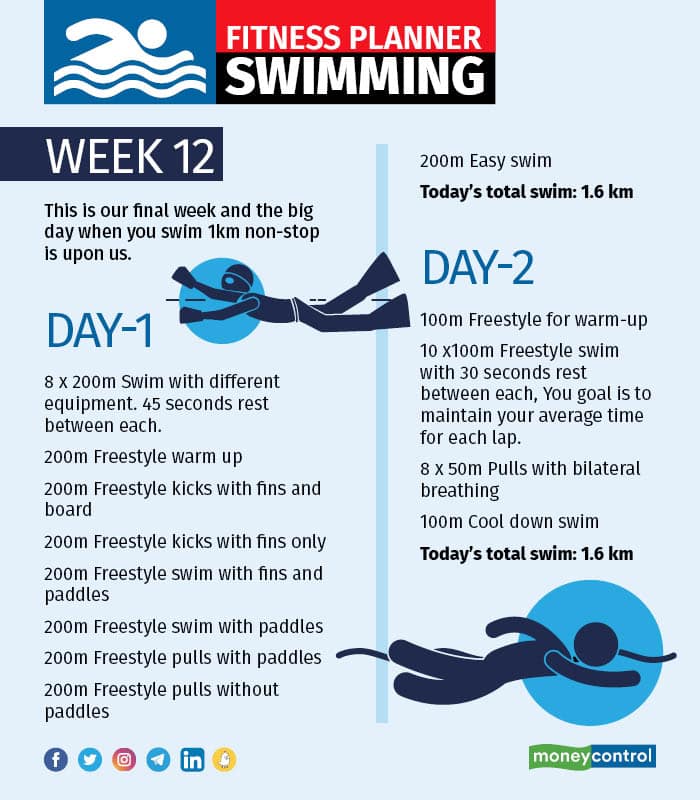
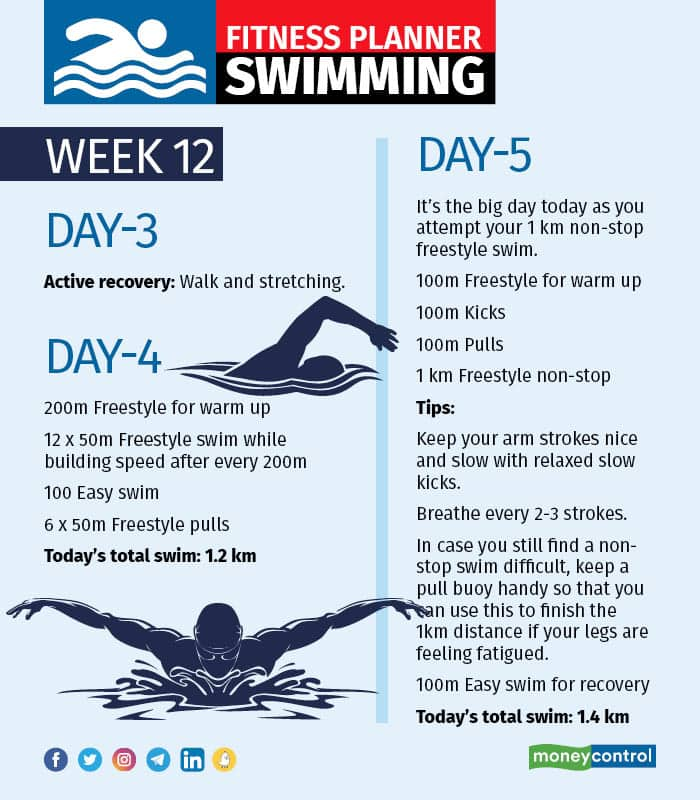
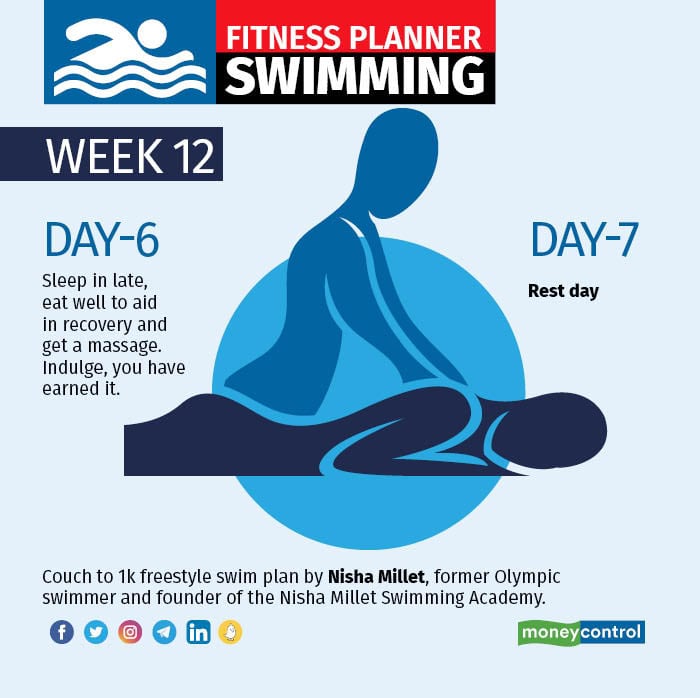
Discover the latest Business News, Sensex, and Nifty updates. Obtain Personal Finance insights, tax queries, and expert opinions on Moneycontrol or download the Moneycontrol App to stay updated!